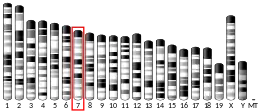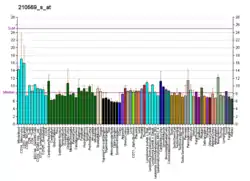| SIGLEC9 | |||||||||||||||||||||||||||||||||||||||||||||||||||
|---|---|---|---|---|---|---|---|---|---|---|---|---|---|---|---|---|---|---|---|---|---|---|---|---|---|---|---|---|---|---|---|---|---|---|---|---|---|---|---|---|---|---|---|---|---|---|---|---|---|---|---|
| Identifiers | |||||||||||||||||||||||||||||||||||||||||||||||||||
| Aliases | SIGLEC9, CD329, CDw329, FOAP-9, OBBP-LIKE, siglec-9, sialic acid binding Ig like lectin 9 | ||||||||||||||||||||||||||||||||||||||||||||||||||
| External IDs | OMIM: 605640 MGI: 1932475 HomoloGene: 130669 GeneCards: SIGLEC9 | ||||||||||||||||||||||||||||||||||||||||||||||||||
| |||||||||||||||||||||||||||||||||||||||||||||||||||
| |||||||||||||||||||||||||||||||||||||||||||||||||||
| |||||||||||||||||||||||||||||||||||||||||||||||||||
| |||||||||||||||||||||||||||||||||||||||||||||||||||
| |||||||||||||||||||||||||||||||||||||||||||||||||||
| Wikidata | |||||||||||||||||||||||||||||||||||||||||||||||||||
| |||||||||||||||||||||||||||||||||||||||||||||||||||
Sialic acid-binding Ig-like lectin 9 is a protein that in humans is encoded by the SIGLEC9 gene.[5][6]
References
- 1 2 3 GRCh38: Ensembl release 89: ENSG00000129450 - Ensembl, May 2017
- 1 2 3 GRCm38: Ensembl release 89: ENSMUSG00000030474 - Ensembl, May 2017
- ↑ "Human PubMed Reference:". National Center for Biotechnology Information, U.S. National Library of Medicine.
- ↑ "Mouse PubMed Reference:". National Center for Biotechnology Information, U.S. National Library of Medicine.
- ↑ Foussias G, Yousef GM, Diamandis EP (Aug 2000). "Identification and molecular characterization of a novel member of the siglec family (SIGLEC9)". Genomics. 67 (2): 171–8. doi:10.1006/geno.2000.6208. PMID 10903842.
- ↑ "Entrez Gene: SIGLEC9 sialic acid binding Ig-like lectin 9".
Further reading
- Yousef GM, Luo LY, Diamandis EP (2000). "Identification of novel human kallikrein-like genes on chromosome 19q13.3-q13.4". Anticancer Res. 19 (4B): 2843–52. PMID 10652563.
- Angata T, Varki A (2000). "Cloning, characterization, and phylogenetic analysis of siglec-9, a new member of the CD33-related group of siglecs. Evidence for co-evolution with sialic acid synthesis pathways". J. Biol. Chem. 275 (29): 22127–35. doi:10.1074/jbc.M002775200. PMID 10801860.
- Zhang JQ, Nicoll G, Jones C, Crocker PR (2000). "Siglec-9, a novel sialic acid binding member of the immunoglobulin superfamily expressed broadly on human blood leukocytes". J. Biol. Chem. 275 (29): 22121–6. doi:10.1074/jbc.M002788200. PMID 10801862.
- Strausberg RL, Feingold EA, Grouse LH, et al. (2003). "Generation and initial analysis of more than 15,000 full-length human and mouse cDNA sequences". Proc. Natl. Acad. Sci. U.S.A. 99 (26): 16899–903. Bibcode:2002PNAS...9916899M. doi:10.1073/pnas.242603899. PMC 139241. PMID 12477932.
- Clark HF, Gurney AL, Abaya E, et al. (2003). "The Secreted Protein Discovery Initiative (SPDI), a Large-Scale Effort to Identify Novel Human Secreted and Transmembrane Proteins: A Bioinformatics Assessment". Genome Res. 13 (10): 2265–70. doi:10.1101/gr.1293003. PMC 403697. PMID 12975309.
- Sonnenburg JL, Altheide TK, Varki A (2004). "A uniquely human consequence of domain-specific functional adaptation in a sialic acid-binding receptor". Glycobiology. 14 (4): 339–46. doi:10.1093/glycob/cwh039. PMID 14693915.
- Grimwood J, Gordon LA, Olsen A, et al. (2004). "The DNA sequence and biology of human chromosome 19". Nature. 428 (6982): 529–35. Bibcode:2004Natur.428..529G. doi:10.1038/nature02399. PMID 15057824.
- Ikehara Y, Ikehara SK, Paulson JC (2004). "Negative regulation of T cell receptor signaling by Siglec-7 (p70/AIRM) and Siglec-9". J. Biol. Chem. 279 (41): 43117–25. doi:10.1074/jbc.M403538200. PMID 15292262.
- Avril T, Floyd H, Lopez F, et al. (2005). "The membrane-proximal immunoreceptor tyrosine-based inhibitory motif is critical for the inhibitory signaling mediated by Siglecs-7 and -9, CD33-related Siglecs expressed on human monocytes and NK cells". J. Immunol. 173 (11): 6841–9. doi:10.4049/jimmunol.173.11.6841. PMID 15557178.
- von Gunten S, Yousefi S, Seitz M, et al. (2005). "Siglec-9 transduces apoptotic and nonapoptotic death signals into neutrophils depending on the proinflammatory cytokine environment". Blood. 106 (4): 1423–31. doi:10.1182/blood-2004-10-4112. PMID 15827126.
- Rapoport EM, Pazynina GV, Sablina MA, et al. (2006). "Probing sialic acid binding Ig-like lectins (siglecs) with sulfated oligosaccharides". Biochemistry Mosc. 71 (5): 496–504. doi:10.1134/S0006297906050051. PMID 16732727. S2CID 11537303.
- Biedermann B, Gil D, Bowen DT, Crocker PR (2007). "Analysis of the CD33-related siglec family reveals that Siglec-9 is an endocytic receptor expressed on subsets of acute myeloid leukemia cells and absent from normal hematopoietic progenitors". Leuk. Res. 31 (2): 211–20. doi:10.1016/j.leukres.2006.05.026. PMID 16828866.
This article is issued from Wikipedia. The text is licensed under Creative Commons - Attribution - Sharealike. Additional terms may apply for the media files.




